4.1.1 Communicable diseases, disease prevention and the immune system
1/73
There's no tags or description
Looks like no tags are added yet.
Name | Mastery | Learn | Test | Matching | Spaced |
|---|
No study sessions yet.
74 Terms
what are the types of pathogen that can cause communicable diseases in plants and animals (and examples of each)
bacteria - (tuberculosis and ring rot (potatoes))
virus - (hiv/aids, influenza, tobacco mosaic virus)
protoctista - (malaria, potato/tomato late blight)
fungi - (black sigatoka (bananas), athletes foot)
what are bacteria?
they produce toxins that damage body cells
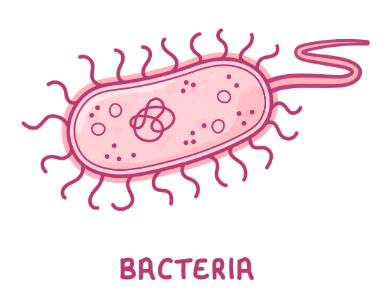
what are viruses?
use host cells to replicate before bursting out and destroying cells
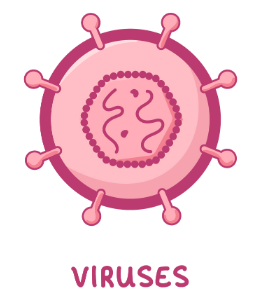
what are protoctists?
take over cells and break them open
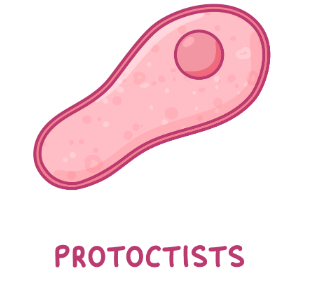
what are fungi?
digest living cells to destroy them and some also produce toxins
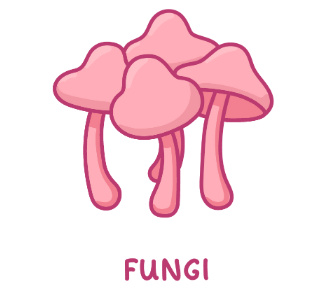
what is the definition and some examples of direct transmission (animals)
direct transmission - pathogens transferred directly from one organism to another
direct contact - skin to skin, kissing, sex
airborne droplets - coughing, sneezing
what is indirect transmission and some examples (animals)
indirect transmission - communicable diseases can also be passed between organisms via an intermediate
food transfer - ingestion of contaminated food or drink
vectors - transmit pathogens from one host to another eg mosquitoes transmit malaria
contaminated objects - pathogens from infected individuals can live on objects for a short time and infect others
what factors increase the risk of communicable diseases (animals)
living conditions - overcrowded areas increase risk of direct transmission
climate - eg warmer temps allow mosquitoes to breed and transmit malaria
social factors - eg lack of health education and healthcare systems
what are examples of vectors in plants
wind - bacterial, viral or fungal spores are carried by the wind to uninfected plants
water - spores can travel on the surface of water to reach uninfected plants
animals - insect and bird can carry pathogens or spores from one plant to another
humans - pathogens/spores can be transmitted by handling plants, clothing, farming tools and practices
what factors increase risk of communicable diseases (plants)
crop variety - some crops are more susceptible to disease
overcrowding - increases likelihood of direct contact
mineral nutrition - poor nutrition reduces resistance of plant
climate change - increased rainfall and wind increase the spread of disease
what are the physical plant defences
waxy cuticle - leaves and stems are covered in waxy cuticle that provide physical barrier
cell wall - plant cells surrounded by cell wall that form physical barrier
production of callose - when plants are attacked by pathogens they produce a polysaccharide called callose - this is deposited between cell wall and surface membrane to make it harder for pathogens to enter
what are the chemical plant defences
insect repellents - reduce the number of insects feeding on plants to prevent them from transmitting pathogens
insecticides - these kill insects to prevent them from transmitting pathogens
antibacterial substances - chemicals like antibiotics kill bacteria/inhibit growth
toxins - some plants produce chemical that break down into cyanide when plant cells are attacked
what are the primary non specific defences against pathogens in animals (physical)
skin
mucous membranes
expulsive reflexes
blood clotting and wound repair
what are the primary non specific defences against pathogens in animals (chemical)
inflammation triggered by:
blood vessels dilating - increases blood flow to the area making it hotter which prevents pathogens from reproducing
blood vessel walls become more permeable so they start to leak tissue fluid causing swelling and isolating any pathogens in the damaged tissue
what are antigens
usually proteins that let the immune system distinguish between bodys own cell and foreign cells
what do antigens allow the immune system to identify
pathogens
abnormal body cells (eg cancerous cells)
toxins
cells from other organisms of the same species
what are phagocytes
a type of white blood cell that engulf and destroy pathogens - phagocytosis
what are the 2 main types of phagocyte
1) neutrophils - these rapidly engulf and destroy pathogens at the site of infection
2) macrophages - these engulf and digest pathogens but also present the pathogens antigens on its cell surface to activate other cells in the immune system
phagocytosis step 1
pathogen releases chemicals that attract a phagocyte
phagocytosis step 2
phagocyte recognises the pathogens antigens as non self. this causes the phagocyte to bind to the pathogen
phagocytosis step 3
phagocyte engulfs the pathogen
phagocytosis step 4
pathogen is now contained within vesicle known as phagosome
phagocytosis step 5
lysosome containing hydrolytic enzymes called lysozymes fuses with the pathogosome to form phagolysosome
phagocytosis step 6
lysozymes digest ad destroy pathogen
phagocytosis step 7
phagocyte presents pathogens antigens on its surface to activate other cells in the immune system then the phagocyte is referred to as an antigen-presenting cell
what are cytokines
chemical that are released by phagocytes that engulfed a pathogen
they act as cell signalling molecules to trigger the movement of other phagocytes to the site of infection
also trigger an increase in body temp to inhibit phagocyte reproduction
what are opsonins
chemicals that bind to pathogens to make them easily recognisable by phagocytes
phagocytes have receptors on their cell surface that bind to common opsonins making it easier for phagocyte to bind to pathogen and destroy it
what are the types of lymphocyte
1) T cell - mature in the thymus, involved in cellular response where they respond to antigens presented on body cells
2) B cell - mature in bone marrow, involved in the humoral response where they produce antibodies
what is a T helper cell
have receptors on their cell surface that bind to complementary antigens on antigen presenting cells
they produce interleukins - a type of cytokine- that stimulate B cells or phagocyte
can also form memory cells or T killer cells
what is a T killer cell
kill abnormal foreign cells by producing the protein perforin
perforin makes holes in the cell surface membrane causing it to become freely permeable and causing cell death
what is a T-regulator cell
they suppress the immune system after apthogens have been destroyed
helps prevent immune system from accidentally attacking body cells
what is a T memory cell
provide long-term immunity against specific pathogens
provide a rapid response if the body is reinfected by the same pathogen
cellular response stage 1
macrophages engulf pathogen and display antigen on the cell surface and are then known as antigen presenting cells
cellular response stage 2
T helper cells with complementary receptors bind to these antigens
cellular response stage 3
on binding, the T helper cell is activated to divide by mitosis to form genetically identical clones
what can cloned T cells do
develop into memory cells
develop into T killer cells
stimulate phagocytosis
stimulate division of B cells
what is the humoral response
one of the specific immune responses that involves the production of specific antibodies to destroy pathogens
how are B cells involved in the humoral response
have antibodies on their cell surface membrane that bind to complementary antigens
they can engulf antigens and display them on their cell membrane to become antigen presenting cells
once activated, they can divide into pasma or memory cells
how are plasma cells involved in the humoral response
types of B cells that produce and secrete antibodies against a specific antigen
have a short lifespan of a few days
how are memory cells involved in the humoral response
type of B cell that provide long term immunity against specific pathogens
have much larger lifespan than plasma cells
they rapidly divide into plasma cells if body is reinfected with the same pathogen
how are helper T cells involved in the humoral response
bind to antigen presenting cells to activate division of B cells
humoral response stage 1
B cell with complimentary antibody binds to antigen on pathogen
humoral response stage 2
B cell engulfs pathogen and presents its antigens on the cell surface membrane to become an antigen presenting cell
humoral response stage 3
clonal selection - activated T helper cell bind to B cell, causing activation of this B cell
humoral response stage 4
clonal expansion - activated B cell divides by mitosis to form plasma and memory cell clones
humoral response stage 5
cloned plasma cells, produce and secrete the specific antibody which is complementary to the antigen on the pathogens surface - these antibodies then attach to antigens on pathogens and destroy them
humoral response stage 6
memory cells circulate the blood and tissue fluid, ready to divide if the body is reinfected with the same pathogen
what is clonal selection
B cell with the correct antibody is selected for cloning by being activated by a T helper cell
what is clonal expansion
division of specific B cells to produce genetically identical clones
what is the graph showing primary vs secondary response
primary
longer lag phase
slower response
involves symptoms
very few B cells specific to the antigen
4-7 days
secondary
shorter lag phase
fast response
no symptoms
quickly divide into plasma cells as memory cells already exist
plasma cells secrete large number of antibodies
memory T cells are also activated into T killer cells to destroy pathogens
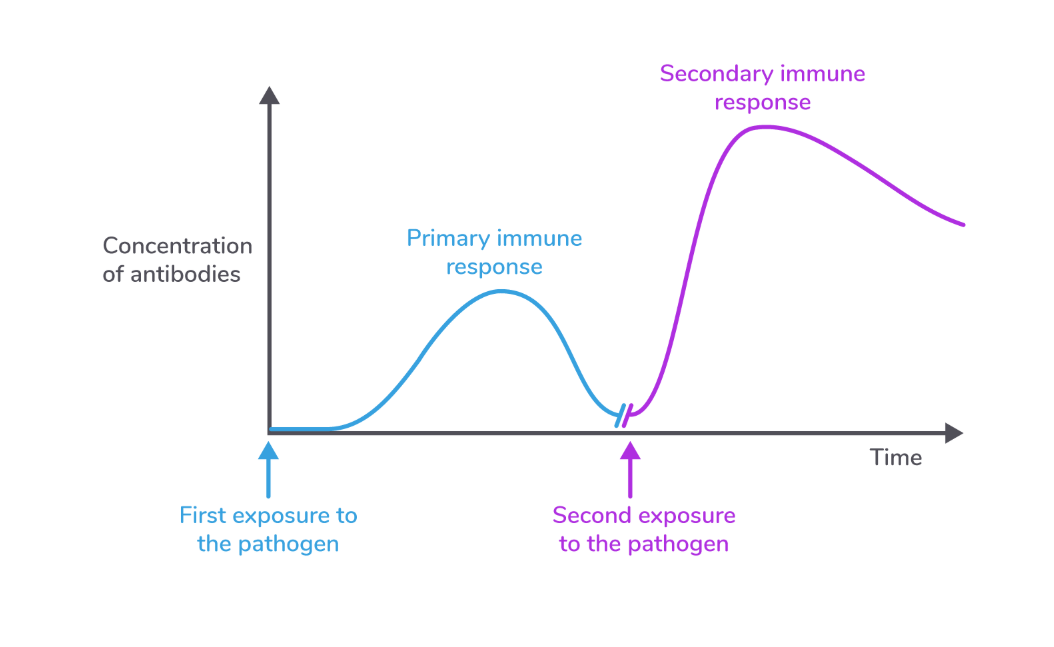
what is an autoimmune disease
when the immune system cant recognise self antigens so starts to attack them and breakdown healthy tissues
what is type 1 diabetes
autoimmune disease where the immune system attacks insulin secreting cells in the pancreas leading to lack of insulin
what is lupus
autoimmune disease where the immune system attacks cells in the connective tissues causing inflamation
what is rheumatoid arthritis
autoimmune disease where the immune system attacks cells in the joints causing pain and inflammation
what is the structure of an antibody
y shaped and made of 4 polypeptide chains (2 heavy and 2 light) and have 3 regions
constant region - same for all antibodies and binds to receptors on cells like B cells
variable region - different for each antibody as its shape is complementary to a specific antigen - its the part of the antibody that binds to antigens
hinge region - allows antibody to be flexible so it can bind to multiple antigens at once
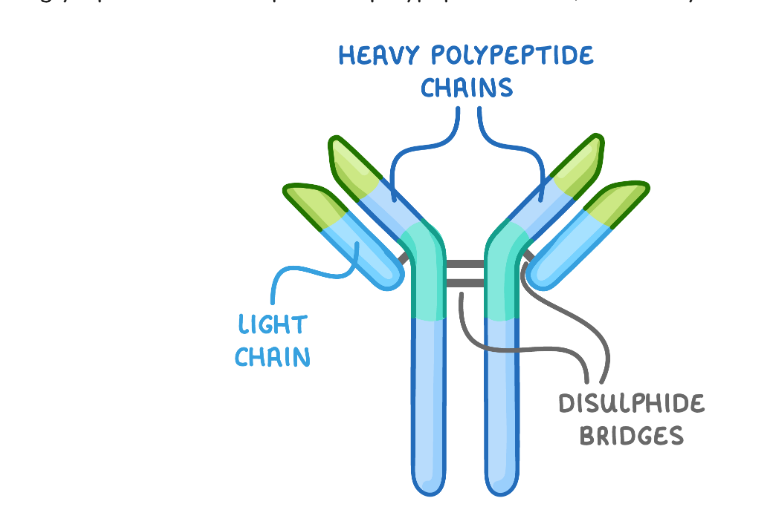
what is the agglutination of pathogens
clumping antigens together to enable easier phagocytosis
makes it easier for phagocytes to locate pathogens and allows them to engulf a number of pathogens at once
antibodies also act as opsonins making pathogens easily recognisable by phagocyte
what is neutralisation of toxins
antibodies act as antitoxins where they bind to toxins produced by pathogens
binding neutralises the toxins to prevent them from damaging body cells
what is preventing pathogens from binding to cells
when antibodies bind to antigens, they block cell surface receptors needed to bind to host cells
this means that pathogen cant bind to or invade host cells
what is active immunity
immunity developed after the immune system makes its own antibodies
what are the types of active immunity
natural - antibodies made after infection
artificial - antibodies made after vaccine
what is passive immunity
immunity from receiving antibodies from another organism
what are the types of passive immunity
natural - antibodies transmitted from mother to baby
artificial - antibodies transfused or injected into individual
what are vaccines
introduction of a pathogens antigens into body to stimulate the bodies immune response to the pathogen allowing the body to develop active artificial immunity
vaccines usually contain antigens but also need to be safe to prevent symptoms of disease
what may vaccines contain
dead/inactive pathogen
weakened strains
harmless version of toxin
isolated antigens from pathogen
genetically engineered antigens
how do vaccines work
1) vaccine with antigens injected
2) stimulates primary immune response to produce antibodies against antigen
3) memory cells capable of recognising those antigens are produced
4) on second exposure to antigen, memory cells rapidly divide into plasma cells
5) plasma cells rapidly produce antibodies against pathogen
6) pathogen destroyed before any symptom
what are the criteria for successful vaccine
availability
minimal side effects
infrastructure (necessary resources for production, storage etc)
administration
herd immunity
what factors may prevent elimination of disease
individual immunity failure
pre immunity infection
pathogen mutation
pathogen variation
pathogen hiding
vaccine objections
what is antigenic variability
some pathogens can change their antigens in the process of a vaccine
makes it difficult to develop vaccines against some pathogens because if the antigen change enough they will no longer be recognised by the immune system
this means memory cells produced from vaccination against one strain wont recognise the antigen from another strain
what are antibiotics
drugs that kill/inhibit bacteria growth
how do antibiotics work
preventing synthesis of bacterial cell wall
disrupting protein activity in cell membrane
disrupting enzyme action
preventing dna synthesis
preventing protein synthesis
how does antibiotic resistance occur via natural selection
1) genetic mutation occur making some bacteria resistant to the antibiotic
2) when an infection is treated with antibiotics resistent bacteria lives
3) resistant bacteria reproduce passing on the allele for resistance to their offspring
what bacteria have developed resistance for many antibiotics
MRSA
C. difficile
what can help reduce development of antibiotic resistance
choosing appropriate antibiotics for treatment
only use when needed
avoid use of wide spectrum antibiotic
ensure you complete the full course of antibiotic
avoid antibiotic use in farming
what are some examples of medicines from natural resources
penicillin - type of mould
aspirin - willow bark
prialt - venom of cone snail